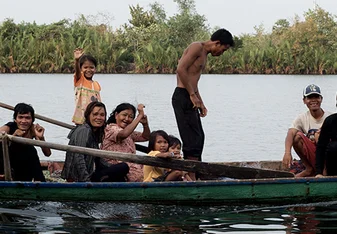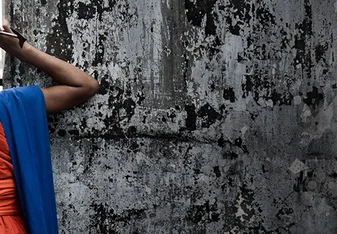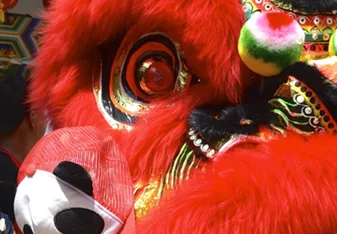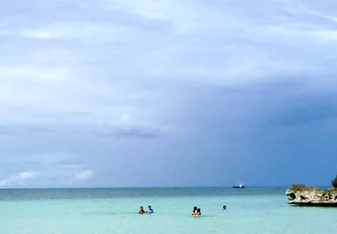Gap Year in Vietnam
About
Vietnam stretches along the easternmost side of the Indochina Peninsula, and together with Thailand, Cambodia, and Laos creates the "Indochina Loop" – the most popular Southeast Asian gap year destination.
A country of contrasts, where you can have it any way you want at a very small price indeed. Experience the hustle and bustle of Ha Noi and Saigon, where you can find some of the best street food on this planet. There are millions of motorbikes, making it near impossible to cross the road. There are also lush resorts alongside Vietnam’s East Coast so different than the main cities. Gappers can visit temples, remnants of the tragic Vietnam War, and see the genius of CuChi Tunnels. The mighty Mekong River Delta and the stunning Ha Long Bay are also destinations that visitors should not miss. You name it -- Vietnam has it for you!
Types of Programs
Volunteering
There are many volunteering options available throughout Vietnam. A lot of Vietnamese orphanages require help from anyone within the medical industry such as doctors, dentists, nurses, nutritionists, etc. There are also programs, like Plan My Gap, that have placements for English speaking teachers, carers, or work within local NGOs available. Placements are usually based in or around Ha Noi and Saigon or in the rural parts of Vietnam and could be as long as 2 weeks, 6 months, or longer.
Teaching English
If you're a native English speaker and are taking a gap year after college, teaching English in Vietnam might be a great option. You don't have to have previous teaching experience. In fact, you can get your TEFL certificate and work placement in Vietnam with organizations like TravelBud. This way you can travel, learn a new skill, and work at the same time. English teachers in Vietnam make an average of $1,500 per month.
Traveling
Vietnam, often described as the country of colors, has everything you may want from your travels. Whether you’re traveling cross-country, South to North, or would rather stay in one place, there’s plenty of places to choose from like the lovely beaches and islands on the East coast to trekking north in Sa Pa. Culture and history seekers can immerse themselves in the world of temples and pagodas scattered all over the country. Big city lovers will find Saigon and Ha Noi fascinating.
Adventure Travel
The most popular adventure travel in Vietnam must be sitting at the back of one of the amazing Easy Riders’ motorbikes. Based in Dalat, these guys know everything about their country’s history and speak very good English to share it all with you. From day trips around the local highlands to several days trips up and down the country, you can’t help but get excited and want more and more! Make sure to use the Original Easy Riders Club based in the center of Dalat, as there is a lot of wannabes and fake bikers around to take advantage!
Planning Your Trip
Visas for Vietnam:
Vietnamese visa application can be made by mail or in person. Applicants require a valid passport, application form, correct application fee, and one photograph (2in x 2in). There are several visa options, including single and multiple entry visas, the correct fee can be confirmed with the Vietnamese Embassy in the U.S.. There are also several agencies that can help with organizing visas, check out Vietnam Immigration or My Vietnam Visa. There is a possibility of obtaining a Vietnam visa on arrival. However, a pre-approval letter is required, and this is only applicable to travelers entering Vietnam by air.
Cost of Living in Vietnam:
- Traveling in Vietnam will not only cost you very little, but you’ll also get to be a millionaire for the duration of your stay. With $1 being around 23,000 Vietnamese Dong, a daily budget of $50 (which is plenty if you’re a backpacker) gives you over a million Dong to spend in a day.
- Guesthouses and small hotels will set you back around $15-20 per night for a double room with air conditioning and a private bathroom. Do your research first and check reviews for the best places to stay.
- Small bottle of water will cost you between 25–70 cents. Street food usually goes for around $2-3 a dish and if you want to eat in local restaurants or cafés, expect a bill an equivalent of around $8-10 for two.
- Drinks like beer and spirits are cheapest if you buy local brands, anything that Vietnam needs to import will be pretty much an equivalent of what you’d pay at home.
- In terms of travel, prices change and vary depending on the agent you stumble upon. Bargaining is essential, and you can get a hop on hop off bus ticket that will take you from Saigon to Ha Noi for as little as $30-40.
- Train fares are higher, but the comfort of your long-distance journey will be significantly better, especially if you’re quite tall. Expect to pay around $65-70 for a 1st class sleeper on the 27-hour long journey from Nha Trang to Ha Noi.
- Airfares are all subject to the time of the year you’re traveling and the airline. You can either book tickets with many local agents or if you want to avoid commission check online at Vietnam Airlines and Jet Star.
Culture and Etiquette in Vietnam:
Not many nations went through what the Vietnamese encountered. From long term Chinese occupation to French colonization, having gone through several wars to then deal with the communist regime, Vietnam has created a unique fusion of all the influences that now create what stands for Vietnamese culture. With lots of loaned Chinese words in their language to the lasting French influence on the Vietnamese cuisine, you can be sure to lose yourself in the smells and colors of this Southeast Asian gem.
Some Tips:
- Be prepared to bargain whenever you’re about to pay, from a taxi ride and hotel room to souvenirs in the local market. The prices will almost always be inflated for tourists. It’s always a good idea to check how much the locals pay or ask for a big discount and then walk away. You’ll soon be called back with a reasonable counter-offer.
- It's customary to take off your shoes before entering homes and residencies. You may also be asked to leave them at the reception at some hotels and guesthouses.
- Like in any other predominantly Buddhist country, feet are considered the least sacred and head the most sacred part of the human body. Don’t point the bottoms of your feet at any person or a Buddhist image and do not attempt to touch or pat anyone’s head.
- Just as in other Southeast Asian countries, in Vietnam, toilet roll goes in the bin next to it, not in the toilet itself.
Health & Safety
The standards of street food and drink are usually the biggest concern for travelers. Standards of sanitation have improved significantly over recent years and street food is usually safe. The biggest problem is when you try eating solely western-style meals, which the locals are not used to cooking. Food poisoning cases come from western-style spaghetti and burgers are common. Feel free to ask if the water used to make ice cubes was filtered and buy bottled water if in doubt. You can usually tell if the ice cubes are commercially made if they have a hole in the middle.
Tropical diseases such as malaria are endemic mainly in rural Vietnam and not usually a problem in bigger cities like Ha Noi or Saigon. Always have sun cream and insect repellent with you.
There have been many safety warnings regarding not only Vietnam but also all other Southeast Asian countries. Much of it comes down to common street smarts like not wandering alone at night or going through back alleyways. Pickpocketing or motorcycle bag-snatching cases have been heard of, so make sure you keep your belongings close. Avoid leaving your bags and backpacks alone at the beach and make sure that if provided, you use your hotel room safe. If there isn't one in your room, you can usually arrange to deposit your valuables at a small charge at reception. Hostels and dorms provide lockers.
Tourist scamming practice is sadly still quite popular, so beware of different options for tourist and locals, double menus in restaurants, rigged meters in taxis, or any offers of being taken on a day trip by a random taxi or a motorcycle driver.
Contributed by Marta Napierala
Gap Year Programs in Vietnam
Frequently Asked Questions
-
What kind of visa do I need for a gap year in Vietnam?
Citizens from North American and European countries are required to obtain a visa to enter Vietnam, no matter the length of stay. To apply, visit the Vietnam national portal on Immigration.
-
What are the benefits of a gap year in Vietnam?
A gap year in Vietnam provides the opportunity to experience busy cities with incredible street food or hike along the east coast. Gappers can learn about the history of Vietnam, including visiting ancient temples. There are also many service opportunities in Vietnam to give back and invest your time and effort in supporting the Vietnamese people.
-
How much does it cost to live in Vietnam for a year?
Vietnam has a very affordable cost of living, even in the most expensive city of Ho Chi Minh. Travelers can live comfortably on US 1,000 to 1500 a month. Additionally, there are work exchange opportunities to lower the overall cost of a gap year in Vietnam. Of course, the total cost will depend on your activities and how much travel you do during the year.
-
What are the most popular types of gap year programs in Vietnam?
Teaching English and volunteering are popular ways for gappers to spend their time in Vietnam. Some programs focus on service, including environmental conservation and improving the quality of life in local communities.



































